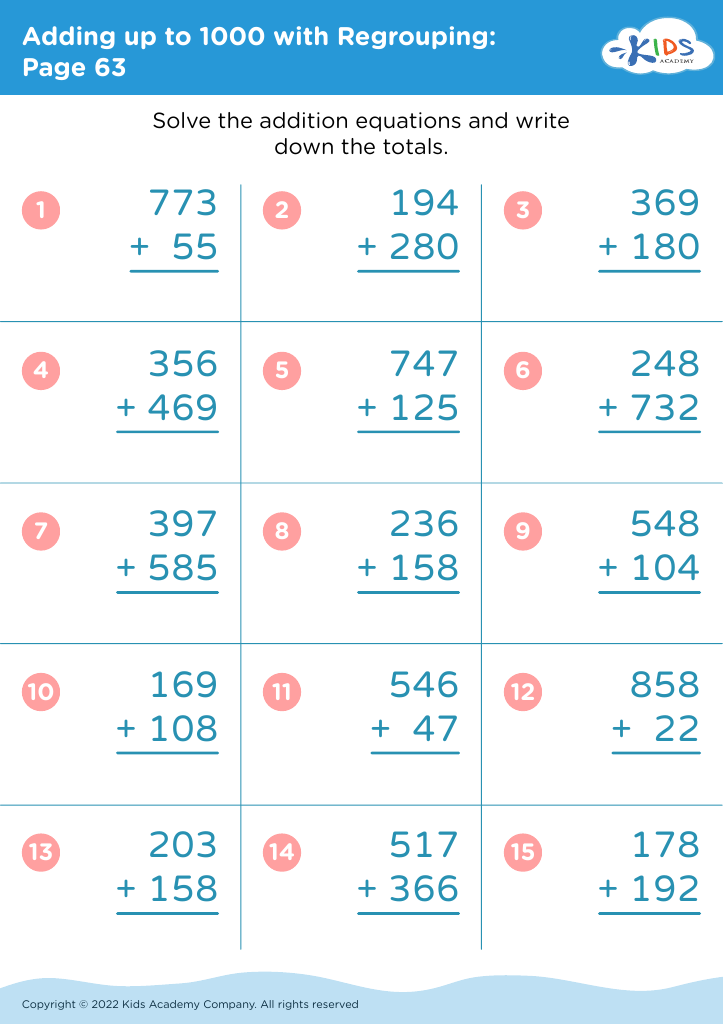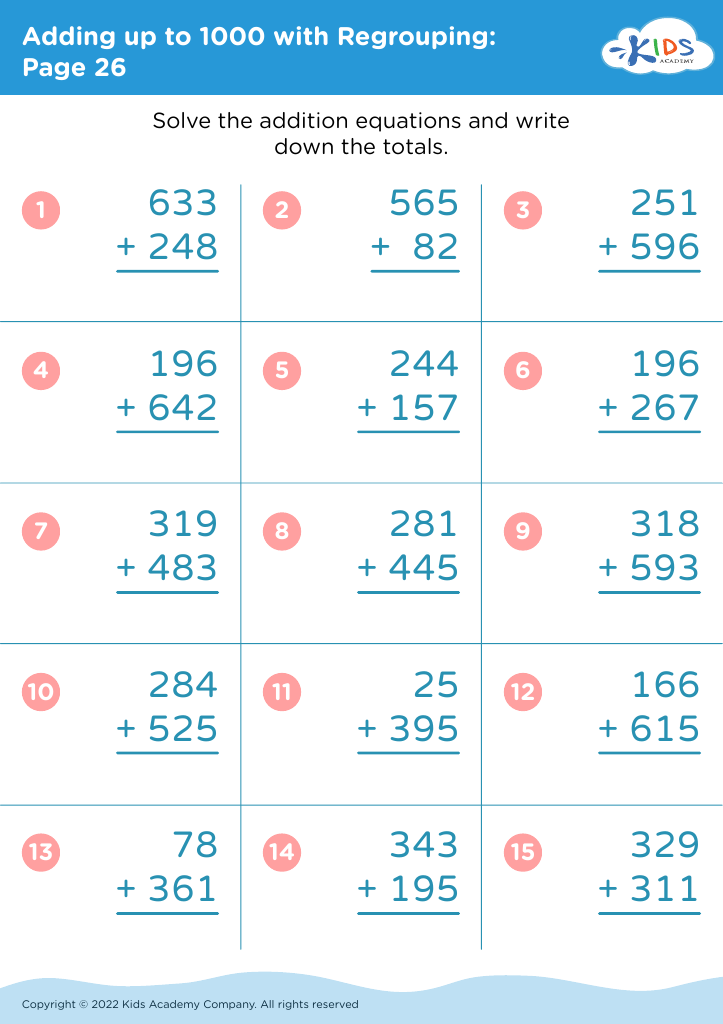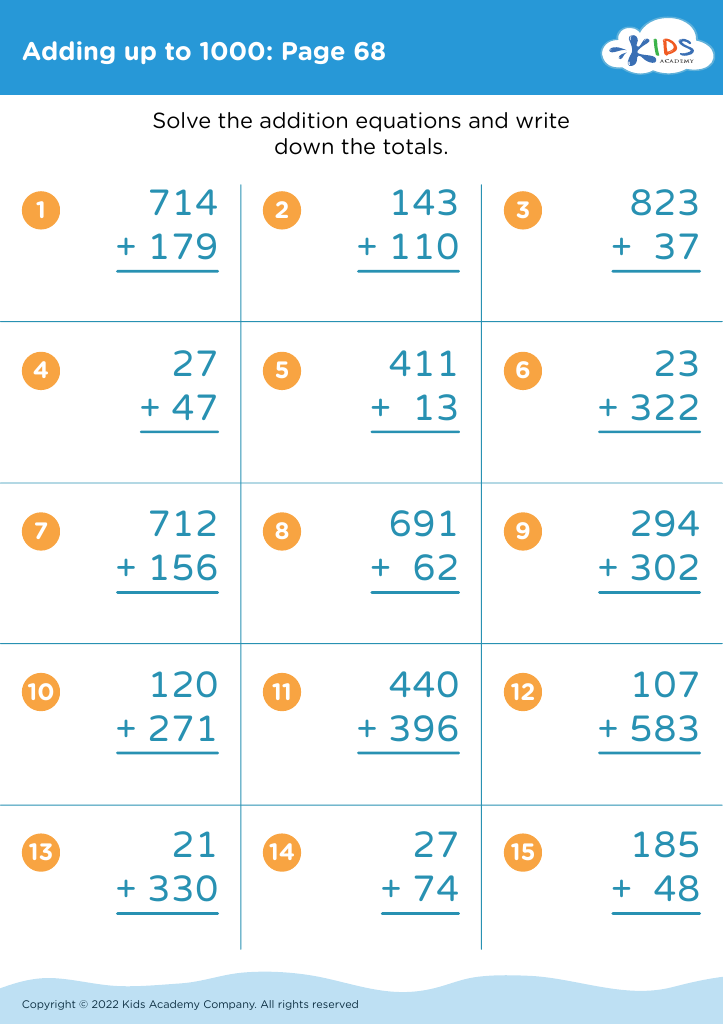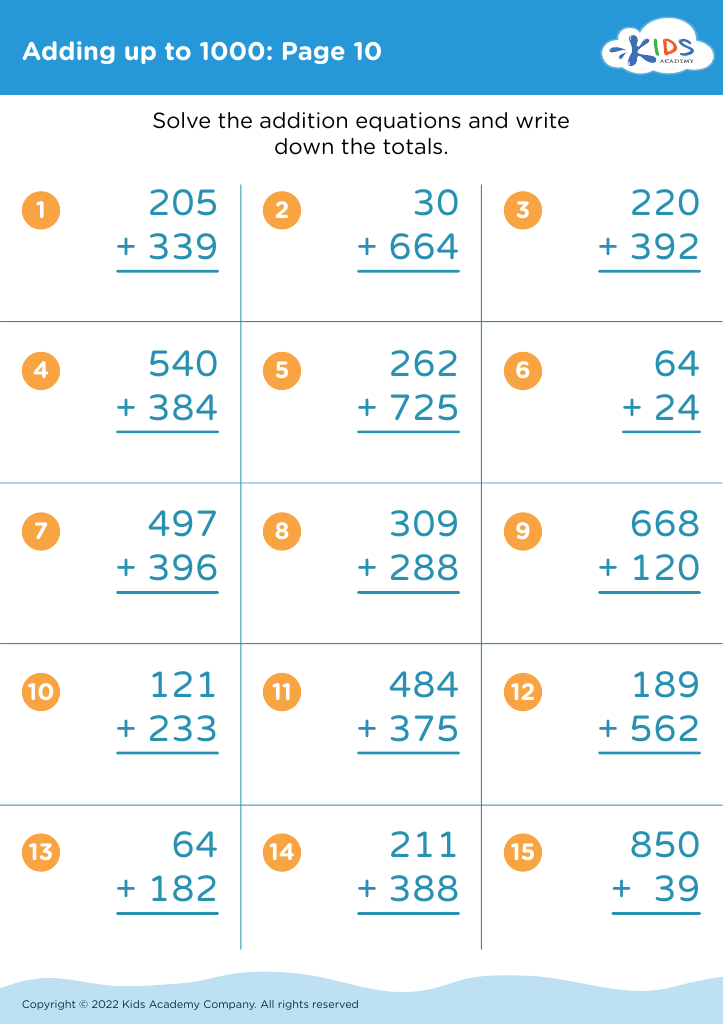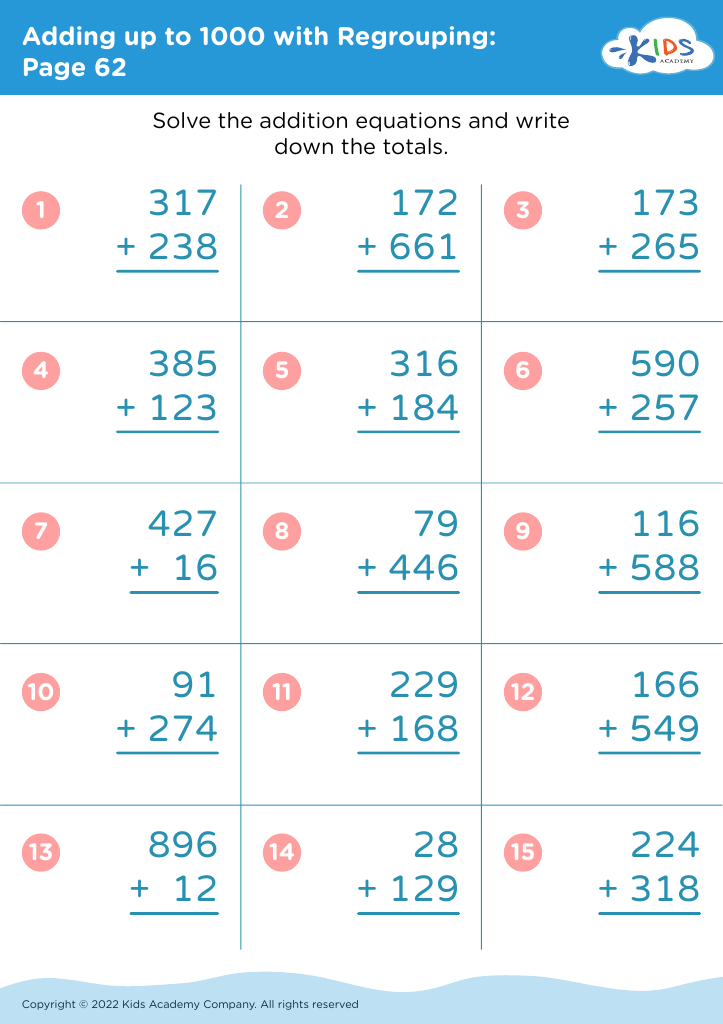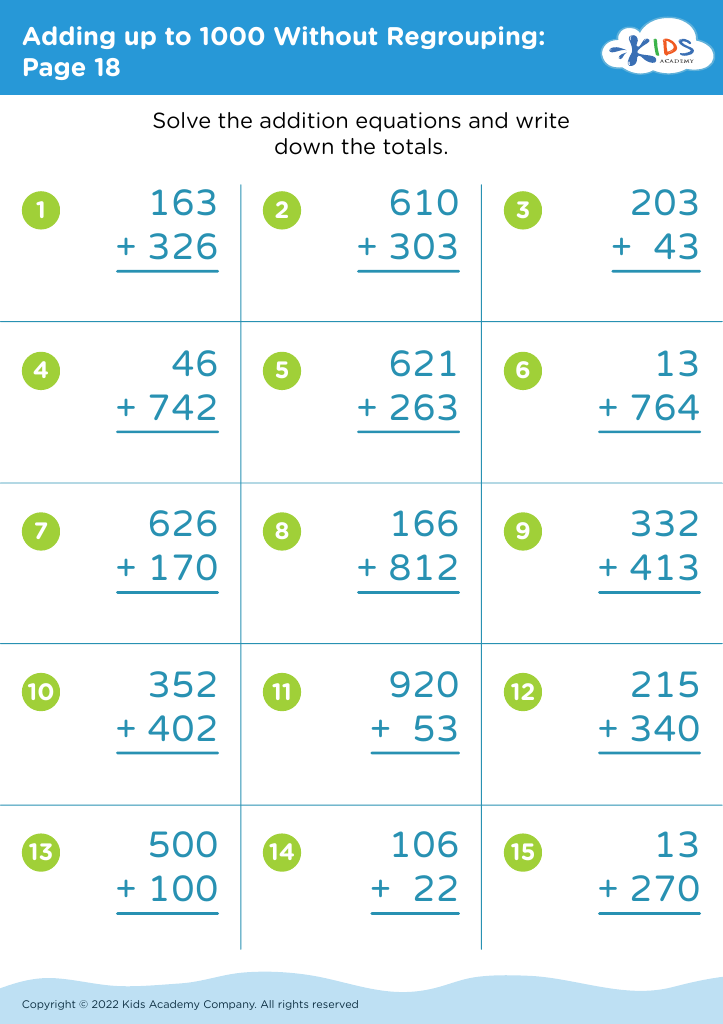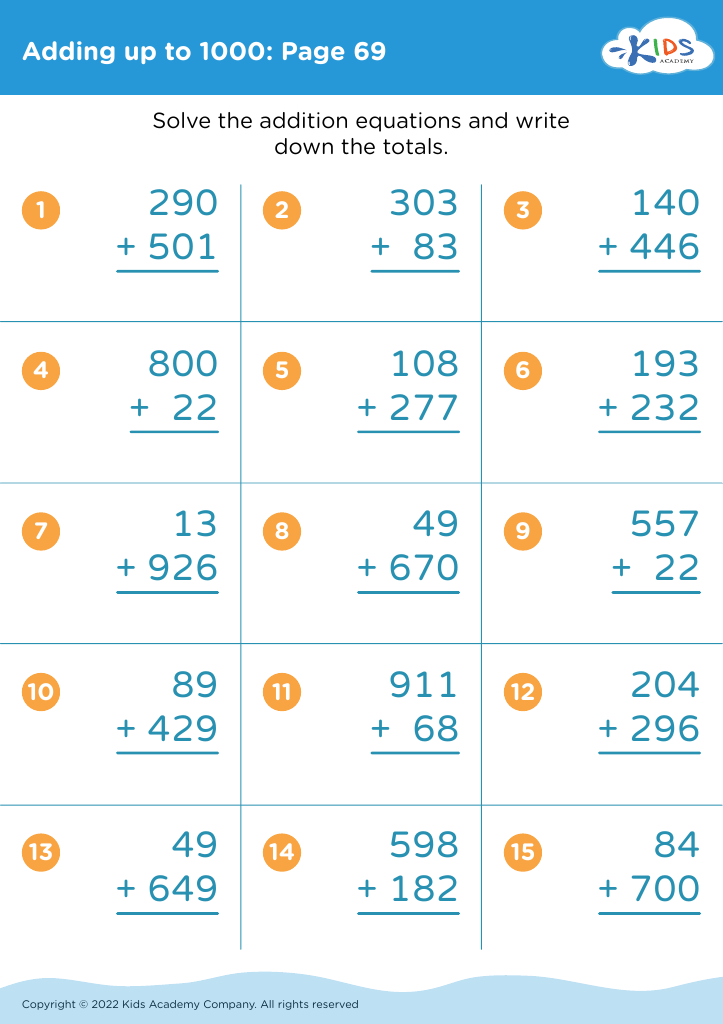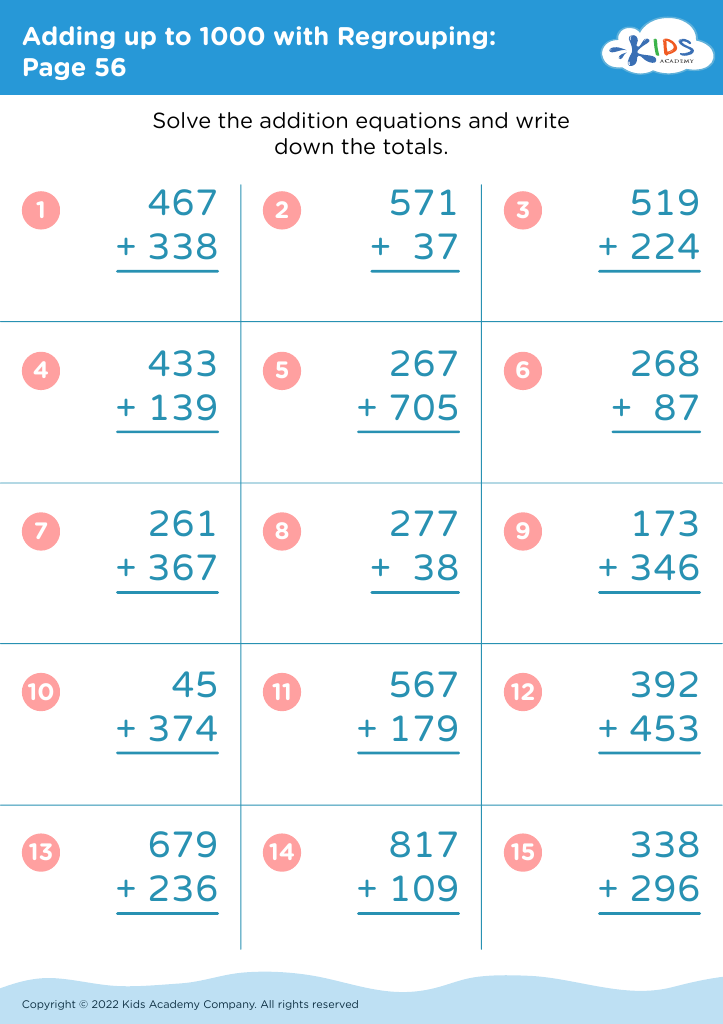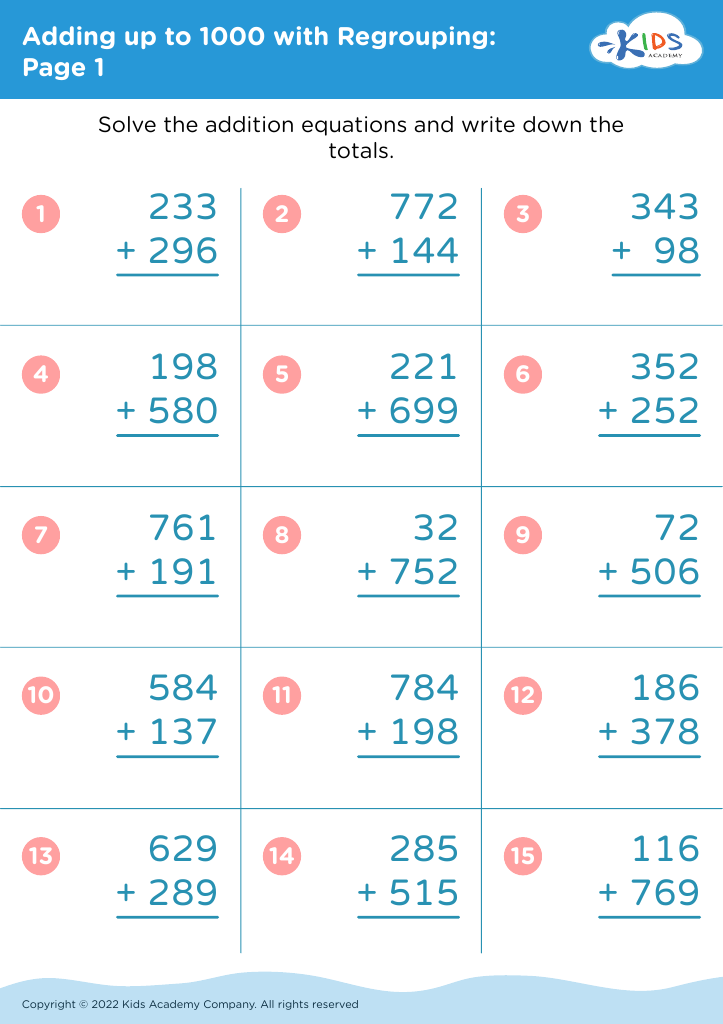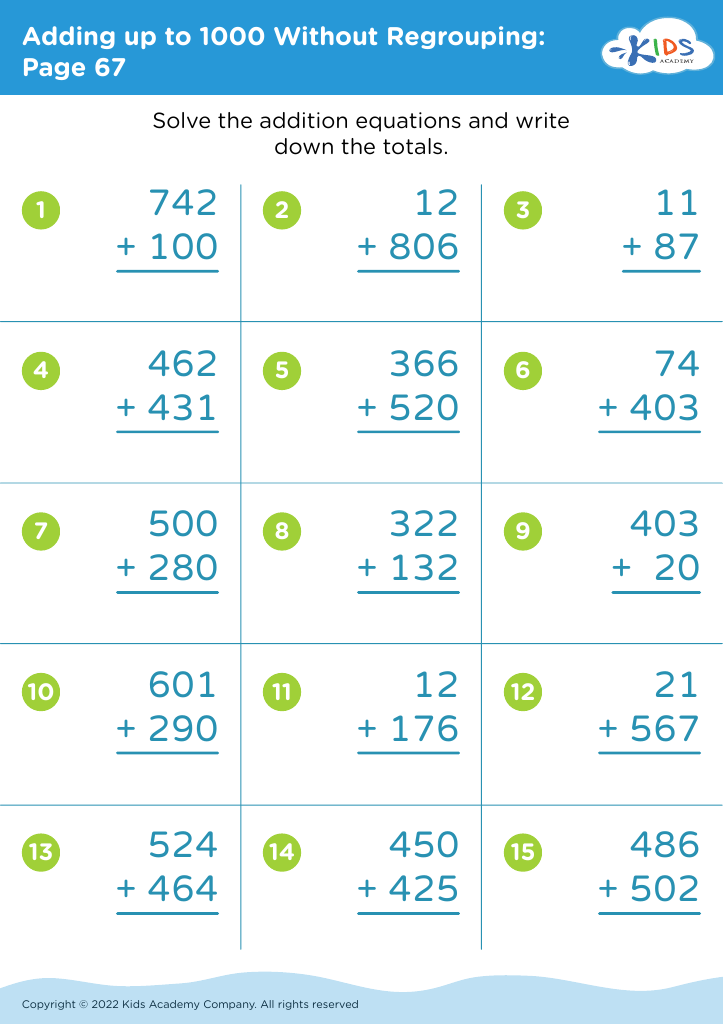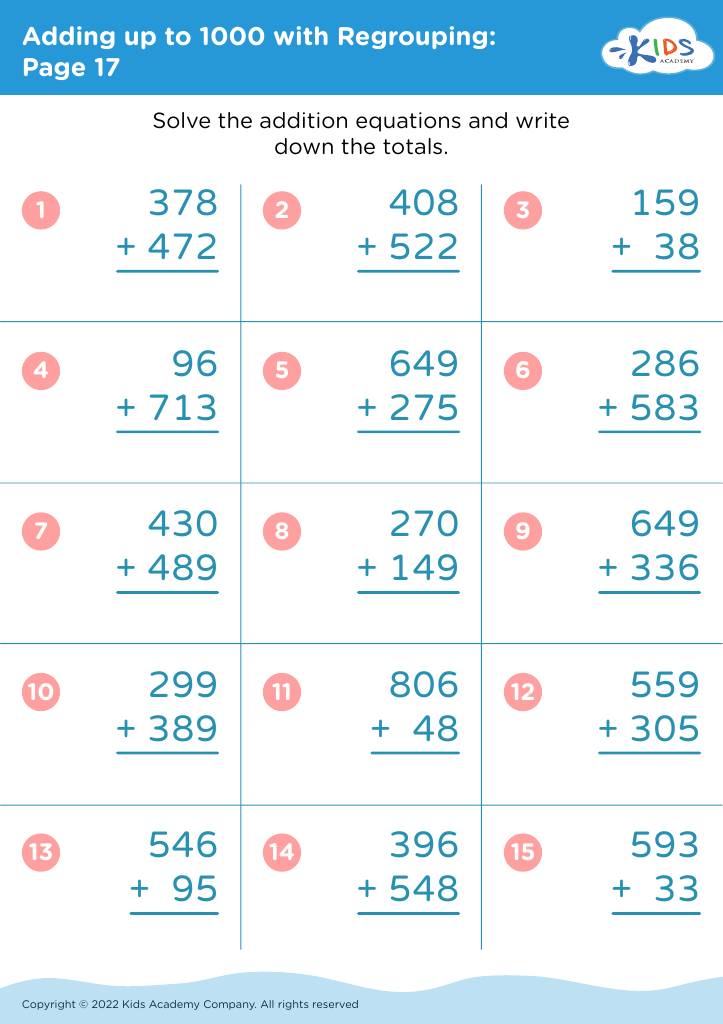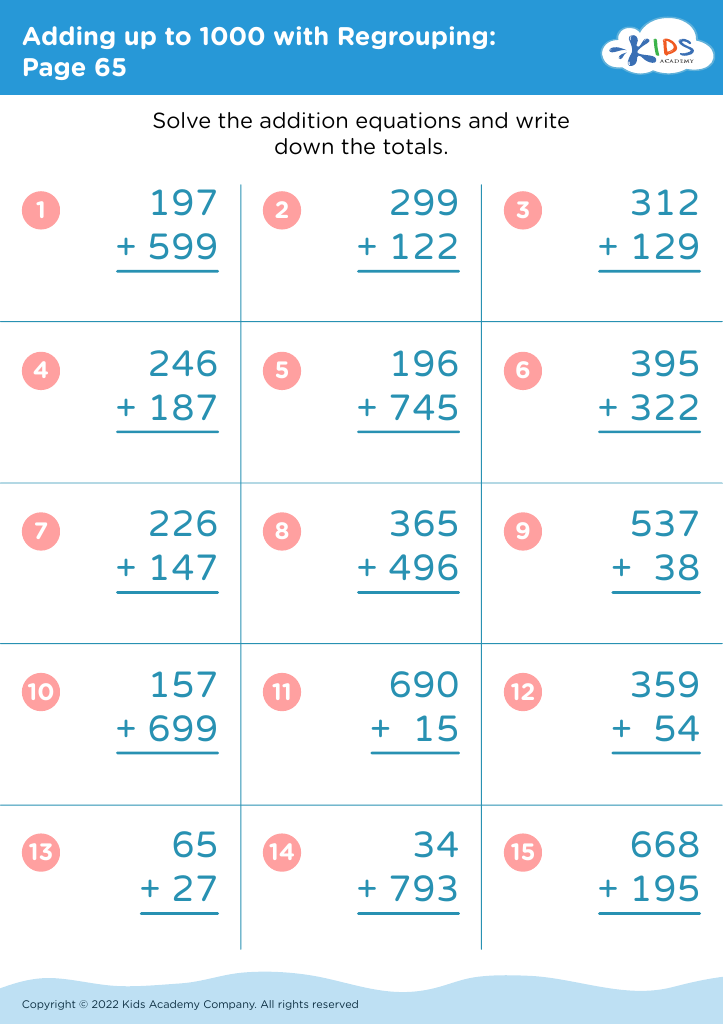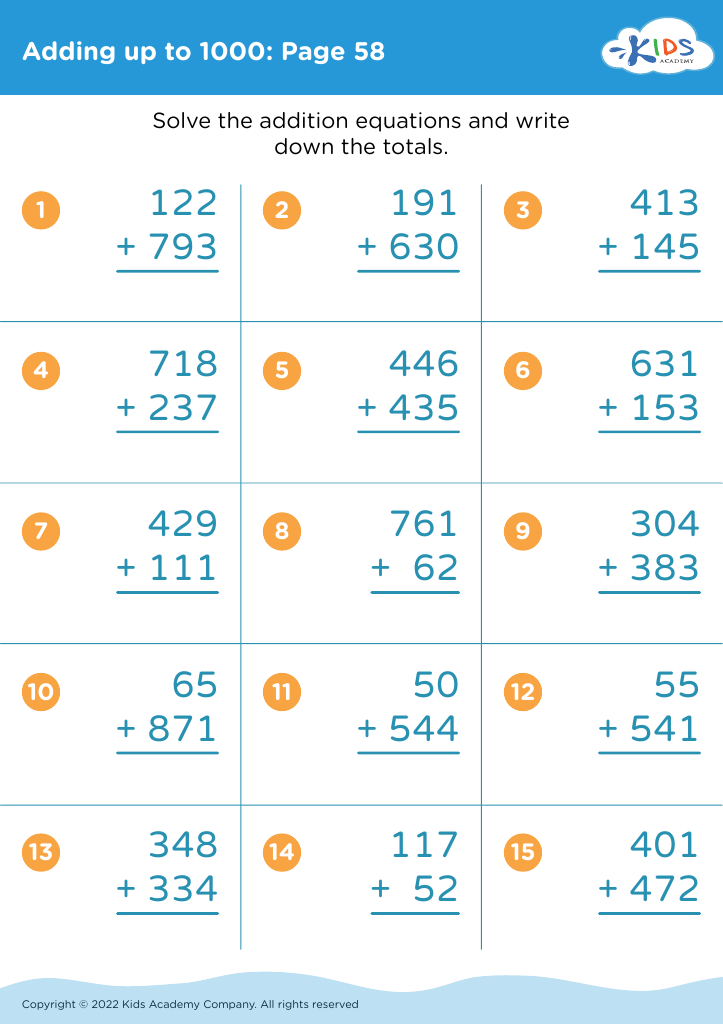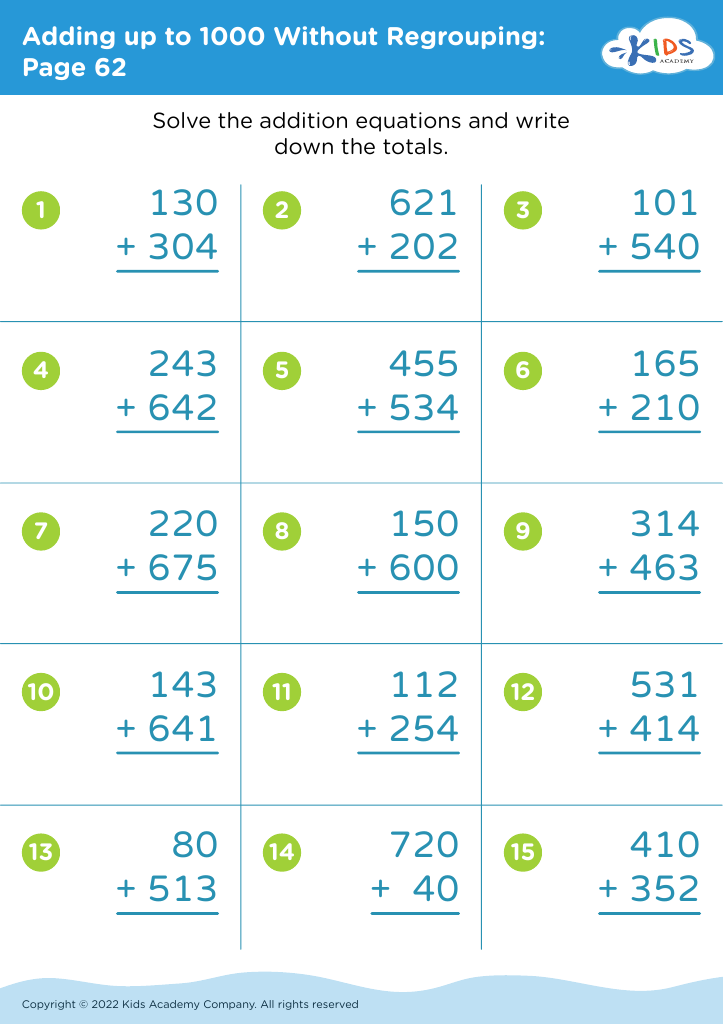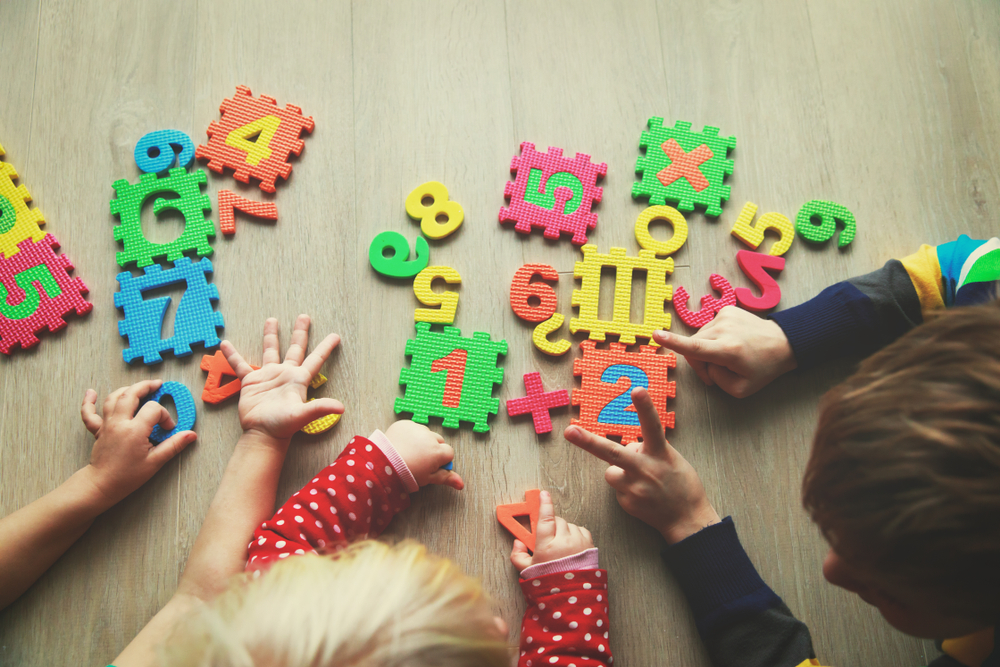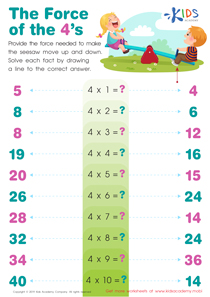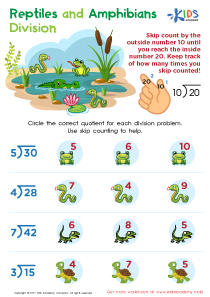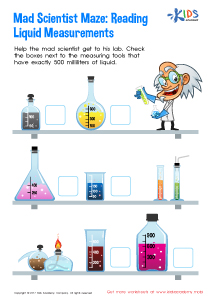Comparing Fractions Grade 3 Addition & Subtraction Worksheets
16 filtered results
-
From - To
Enhance your third grader's math skills with our engaging "Comparing Fractions Grade 3 Addition & Subtraction Worksheets." These printable resources provide a fun and effective way for students to understand and compare fractions through addition and subtraction exercises. Students will build confidence as they learn to identify equivalent fractions, understand numerator and denominator relationships, and apply these concepts in real-world scenarios. Perfect for classroom use or at-home practice, our worksheets align with educational standards and encourage critical thinking. Help your child master fraction comparison in a thorough and enjoyable way with our comprehensive worksheets designed specifically for grade 3 learners!
Understanding how to compare fractions is crucial for third graders as it lays the groundwork for more advanced math concepts. Parents and teachers should care about this topic for several reasons.
Firstly, comparing fractions enhances children's number sense. It encourages them to recognize and understand relationships between different quantities, which is a fundamental skill in mathematics. For instance, when students learn to determine which fraction is larger, they are engaging in critical thinking and problem-solving.
Secondly, this skill is essential for addition and subtraction of fractions. By grasping how to compare fractions, students can identify common denominators and manipulate fractions effectively, which are pivotal skills as they advance in math.
Moreover, teaching this concept supports the development of perseverance and coherence in learning. When students struggle with comparing fractions, they practice persistence and learn to evaluate their thought processes, strengthening their overall learning abilities.
Additionally, as fractions often appear in everyday life—like cooking, budgeting, and measuring—understanding them becomes practical and allows for real-world applications. Equipping students with the ability to compare and manipulate fractions prepares them for future success in math and beyond, fostering confidence in their academic journey.
